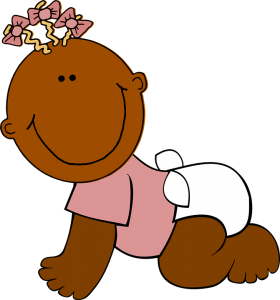
One thing that all kids have in common is they love music, especially kids songs lyrics that rhymes. Play a lullaby or nursery rhyme, and he/she may start to sway side to side and after hearing the same song in repetition, he/she will even begin to memorize the words and start to sing-a-long.
What’s great about this is music and nursery rhyme aid in a child’s growth, development, and early learning skills.
Itsy Bitsy Spider
Not only does this song have a catchy pattern, but it also introduces finger play to your baby. According to the director of speech/language pathology at the American Speech-Language-Hearing Association in Rockville, MD, Diane Paul, this song has significant values. The tempo, pitch, and pattern will capture your child’s attention and teach them to foresee what will come next.
One Two Buckle My Shoe
Songs like this that are easy to remember, have exceptional value, especially for 3-year-olds, says Diane Paul. Listening to songs like this can almost ensure your child’s future success in spelling and reading.
An associate professor of early childhood education at the Indiana University in Fort Wayne, Terri Swim, claims that rhymes can teach toddlers pre-literacy skills and promote the development of language called, “phonemic awareness”(phonemes). In the English language, there are 42 sounds, which toddlers will learn to distinguish between while listening to songs like this.
The Wheels on the Bus Go Round and Round
Paul also states that a mom can help build her child’s vocabulary by talking to him/her more, which the quantities of the words are really what matters. Adding your own verses to songs like this can help build your child’s vocabulary.
There Was A Crooked Man
An assistant research professor at the National Institute for Early Research in New Brunswick, NJ, Shannon Ayers, claims that when children listen to the rhythm and beats of language in nursery rhymes, it will later help them to separate syllables.
Where is Thumbkin?
Paul explains that this kind of rhyme can help toddlers to learn how conversations work by acting them out. When we have conversations, rhymes match the melodic patterns.
Using your thumbs as characters will also introduce your child to the concept of symbolic thinking.
Five Little Monkeys
A project research coordinator at the National Institute for Early Education Research, in New Brunswick, NJ, Judi Boyd, says the pattern before the last chomp and the anticipation, are what this rhyme is really about which helps to build a mathematical thinking foundation. Exploring patterns is necessary for children to learn to associate patterns they encounter in the future with symbols and numbers.